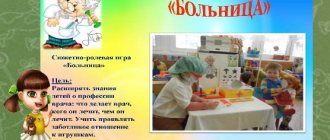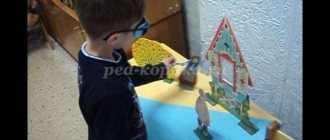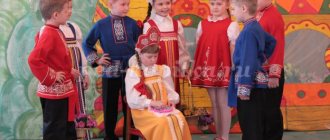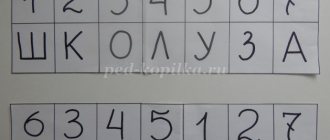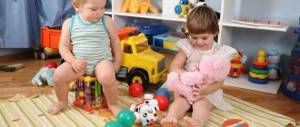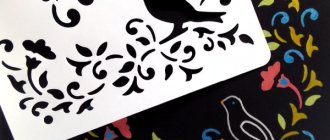The importance of dramatization in preschool education
Speech development is an important component that influences the harmonious development of personality. Correct speech is not only the basis for successful literacy acquisition, but also socialization in society. And the theatricalization of fairy tales in the middle group is an effective way of forming it.
Theatrical performance
For preschool children, the leading type of activity is play. Therefore, all the knowledge they gain during the game is absorbed more effectively. Children do not need to be forced to study: they themselves will be happy to participate in such an educational process. Dramatization has a positive effect on:
- vocabulary - it is enriched and the meaning of words is clarified;
- grammatical structure of speech - taking artistic speech as a model, the preschooler will construct his sentences correctly;
- prosody - speech becomes intonationally colored, diction improves, children master the skill of controlling the pitch and strength of the voice;
- the quality of coherent speech improves.
Important! Dramatizing a fairy tale in the middle group helps to develop a “linguistic sense.” During the production and performance, children can improvise and use proverbs and sayings in coherent speech. All this contributes to the further successful mastery of the linguistic norms of the native language.
Staging children's fairy tales has a positive effect on the emotional and volitional sphere. Children become less inhibited, cease to be afraid of public speaking, and make contact more easily. Dramatization teaches children to better understand the emotions of people around them. This is especially important for those who have speech impairments because they find it difficult to understand the emotional state of other people.
Another of the main goals of children's theatrical activities is to introduce the preschooler to the artistic style and features of folk culture. Therefore, educators most often choose Russian folk tales or famous works of children's writers for production.
Lesson in kindergarten
Several types of dramatization are used in preschool activities:
- games that imitate the habits of animals, people or famous literary characters;
- dialogue;
- dramatization of famous works;
- improvisation games, when they act out performances without preparation.
You need to start getting acquainted with the world of theater by staging simple scenes, gradually moving on to more complex ones, for example, improvisation. Theatrical activities can be implemented both within the group and at the preschool level at festive events.
Game-dramatization of the fairy tale “Turnip” in the middle group of a preschool educational institution
Scenario for a dramatization game based on the Russian folk tale “Turnip” in kindergarten. The script will be useful for teachers who implement fairy tale therapy technology in their practice. Goal: Development of the emotional sphere in children, formation of trusting relationships, activation of attention. Objectives: 1. Coordinate your actions with the actions of other children. 2. Expand and enrich children’s vocabulary with action words (went, pulled, ran, called). 3. Cultivate an interest in dramatization, a desire to transform into the images of fairy tale heroes, using various means of expression. Materials and equipment: decoration for the game, attributes for each character in the fairy tale. Progress of the game: Educator: Let me look into your eyes. I’ll tell you a fairy tale. And the fairy tale will be about this... A round side, a yellow side. A bun sits in a garden bed, firmly rooted in the ground. Of course this is - (Turnip) Once upon a time there lived a grandfather and a woman (children come out in appropriate clothes). Grandfather says to grandmother: Grandfather: “I’ll go to the field, plant a turnip, maybe some will grow.” Educator: Grandfather went to the field, dug a hole, put a seed. I poured some water and went home. Several days pass. Grandfather goes back to the field to see if the turnip has grown? (At this moment the “turnip” sits on a chair). Grandfather came and looked, and the turnip had grown very, very big. Grandfather for the turnip. He pulls and pulls, but can’t pull it out, and says: Grandfather: “I’ll call grandma.” “Grandma, grandma, let’s go pull the turnip.” (grandfather leads grandmother...-child by the hand). Educator: “Grandma for grandfather, grandfather for turnip, they pull and pull, but they cannot pull it out. The grandmother went to call her granddaughter.” (Grandmother leads her granddaughter). Grandma; “Granddaughter, granddaughter, help me out! Let's go pull the turnip." (grandmother leads her granddaughter…-child by the hand). Educator: “They pull: the granddaughter for the grandmother, the grandmother for the grandfather, the grandfather for the turnip, they pull and pull, but they cannot pull it out.” The granddaughter went to call Zhuchka. Granddaughter: “Bug, Bug, help me out, let’s go pull a turnip!” Educator: “They pull: The bug for the granddaughter, the granddaughter for the grandmother, the grandmother for the grandfather, the grandfather for the turnip, they pull and pull, but they can’t pull it out.” Bug called Murka: Bug: “Murka, Murka, help me out, let’s go pull the turnip.” Educator: “Murka came running, pulling on Zhuchka, Zhuchka on her granddaughter, granddaughter on grandma, grandma on grandpa, they pulled and pulled, but they couldn’t pull it out. Murka called the mouse. Murka: “Mouse, mouse, help me out, let’s go pull the turnip!” Educator: “A mouse came running, pulled Murka, Murka pulled Zhuchka, Zhuchka pulled out the turnip, Zhuchka pulled the turnip out.” Even though the turnip was big, Even though it sat firmly, Together we dragged the turnip, We won only through friendship. Educator: Guys, what proverbs or sayings can be said for this fairy tale? - “Alone in the field is not a warrior.” One grandfather could not pull out the turnip, but together they pulled it out. - “Friendship is a sacred thing.” Only friendship helps in business. - "The world is not without good people". Only good people go to help others. - “Patience and work will grind everything down.” Only the hardworking and patient achieve success in their undertakings. Child: “We showed you a fairy tale. Is it good or bad? And now we will ask you to clap for us.”
We recommend watching:
A theatrical dramatization of a fairy tale for children aged 5-7 years in kindergarten. Scenario: A fairy tale in verse for children of the middle group of preschool educational institutions. Scenario
Fairy tales for dramatization in the middle group
Children of this age group are characterized by their desire for socialization. They are more actively involved in role-playing games, trying on various roles (social and heroes of famous fairy tales).
Note! In middle preschool age, children become more attentive; they can already perceive not only poetic works, but also short Russian folk works.
Coloring pages on traffic rules for a preschooler 3-4 years old
What performances can be shown in the middle group?
"Zayushkina's hut"
The role of the leader is the teacher himself or, if desired, the child. The main characters of this tale are:
- Hare;
- Fox;
- Dog;
- Bear;
- Bull;
- Rooster.
The teacher must prepare the appropriate props in advance. These are masks with animal ears (bear cub, dog and other heroes) or their image. This is also the bast zayushkina and the ice fox hut. Before the start of the production, the teacher reads a fairy tale to the children, introducing them not only to its content, but also to how to convey the character of the characters using facial expressions and intonation.
The teacher explains to the children the meaning of outdated and unfamiliar words so that the students understand the content of the work. During the discussion of the fairy tale, he asks leading questions about the characters' personalities so that they can convey them during the dramatization. For example, the fox is cunning, the hare is kind, modest, the rooster is brave, and so on for all the characters.
The fairy tale “Zayushkina’s Hut” is associated with the lexical themes “Seasons”, “Domestic and wild animals”. During the dramatization, children learn to form possessive adjectives: hare, bunny's hut, fox.
"Kolobok"
Another popular fairy tale that is in the middle school card index. The leader is an adult or a child. Fairy tale heroes:
- Kolobok;
- Grandma;
- Dedka;
- Hare;
- Wolf;
- Bear;
- Fox.
The peculiarity of this fairy tale is that the characters have few words, so children need to use more facial expressions and gestures to convey the characters of their characters. The teacher can make a path with plants, mushrooms, and berries along which Kolobok will roll.
This tale is related to the lexical themes “Wild and Domestic Animals”, “Family”. You can also discuss rules of behavior with students.
Note! This work can also be chosen for an improvisation game. For example, invite children to come up with lines for Grandmother and Grandfather. Or other animals from which Kolobok rolled away.
Theatrical activities in kindergarten
"Fly Tsokotukha"
This work is popular with children and is often chosen to be staged because it is in the form of a poem. The characters' phrases are easier to remember, which is why this Russian fairy tale is often chosen for classes in the middle group. The role of the presenter can be divided into several children, because the text is large, or you can choose an excerpt for dramatization.
The whole group can be involved in the staging of “Flies-Tsokotukha”. Children need to portray characters without words using facial expressions, gestures, and movements. The main roles are Mukha-Tsokotukha and Komarik.
This work is also suitable for an improvised script if the level of speech development of children allows them to independently come up with phrases for their characters. This tale can also be used for a logori lesson.
To stage this fairy tale, you should try to prepare a house in which the heroes will live. The teacher can do this independently or approach the children with this request. This will make the children even more willing to take part in theatrical activities.
Classes on drawing a mother's portrait in middle kindergarten groups
Children play the roles of a Mouse, a Frog, a Bunny, a Fox, a Wolf Cub and a Bear. When dramatizing, children can add onomatopoeic complexes to words to make the characters’ speech even more expressive.
Note! “Teremok” is best suited for practicing the prosodic side of speech, namely the pitch and strength of the voice.
"Turnip"
This fairy tale is also introduced to children in middle preschool age. You can choose a child or use props in the role of Turnip. The main characters are Grandmother, Grandfather, Granddaughter, Bug (dog), Cat and Mouse.
The peculiarity of this tale is that the characters have practically no words. Therefore, children can improvise. For example, a child playing the “cat” role can say “Meow,” Bug can bark, and Mouse can squeak. For human characters, the teacher asks the children to come up with short phrases.
Important! This fairy tale is also suitable for working with non-speaking children, because onomatopoeia is one of the main directions in working with this category of people. Only in this case there is no need to invite children to come up with phrases on their own.
Staging "Turnip"
All of the listed works are suitable for working with children of middle preschool age because they are small in volume; characters speak in simple phrases, their character must be conveyed through facial expressions and gestures. The lexical topics covered are appropriate for the children's age, so they will be able to understand what the fairy tale was about.
After reading, the teacher conducts a brief analysis of the work with the children. He asks questions about what the plot was about, which of the characters is positive and which is negative, why they think so, and other similar questions. Children understand the characters better and will be able to convey them better.
During such a conversation, children learn to express their opinions, which has a positive effect on the quality of coherent speech. The vocabulary is enriched and clarified, sentences become more grammatically correct.
Children dramatize the fairy tale "Teremok"
Dramatization of the fairy tale “Turnip” in the middle group
Allenova Natalya Fedorovna
Dramatization of the fairy tale “Turnip” in the middle group
Goal: to promote the development of children's oral speech, memory, and creative imagination.
Equipment: hero costumes, fence, house, flower garden, trees, shovel, watering can.
Heroes: Grandfather, Baba, Granddaughter, Bug, Cat, Mouse, Turnip .
Content:
Educator: Hello guys. Do you know where you have come today? Today our group has turned into a theater . Please come in and sit down on the chairs. (Children sit down)
Educator: Guys, do you know that in every theater there are spectators and artists? Artists are those people who perform a concert or performance. And the audience is the people who watch this performance. So today, some children will be spectators, some children will be artists. Our guys-artists have prepared for you the audience, showing an interesting fairy tale . Please guess the name of the fairy tale based on the riddle :
She is being pulled by a grandmother and granddaughter,
Cat, grandfather and mouse with Bug.
Educator: That's right, guys. The artists will show you the fairy tale “ Turnip ”
. We watch and listen carefully.
Educator: Once upon a time there lived a very large, friendly family. They never quarreled, lived together in harmony, and helped each other in everything. One day my grandfather decided to plant a turnip . He took a shovel and went out into the garden and began digging the ground.
Grandfather: I shovel once
I shovel two
Get out, get out
Evil weed.
Educator: Grandfather dug up the soil, planted a seed and took care of it, watering it with fresh, clean water. Our grandfather is tired.
Grandfather: Oh, let me go and rest.
Educator: The sun warmed up, our turnip grew - grew and grew!
Turnip : (straightens up to full height)
I am useful and tasty
Adults and children need me
Tasty and strong
I call myself Turnip !
Grandfather: (Grandfather comes out)
Educator: Grandfather came to the garden to look at his turnip and was very surprised ! has grown very, very big . Grandfather went to pick a turnip : he pulled, he pulled, but he couldn’t pull it out.
Grandfather: Oh!
Don't pull out the turnip !
It was too firmly .
Educator: Grandfather called grandmother.
Grandfather: Grandma!
Educator: Grandma can’t hear, she’s old. He called again.
Grandfather: Grandma!
Grandma: What happened?
Grandfather: Help me pull the turnip .
Grandma: I’m running, I’m running, I’ll help you now!
(Grandma comes out)
Educator: Grandma came running to help and the two of them began to pull the turnip . Grandma for grandfather, grandfather for turnip , they pull and pull, but they can’t pull it out. The grandmother called her granddaughter.
Grandma: Granddaughter!
Granddaughter: Yes, grandma!
Grandma: Help us pull the turnip .
Granddaughter: I’m running, I’m running, I’ll help you now!
(Granddaughter comes out)
Educator: The three of us began to pull the turnip . Granddaughter for grandma, grandma for grandpa, grandpa for turnip , they pull and pull, but they can’t pull it out. The granddaughter called the dog Zhuchka.
Granddaughter: Bug!
Bug: Woof-woof!
Granddaughter: Run, help us pull out the turnip .
(Bug comes out)
Educator: Bug came running to help. The four of them began to pull the turnip . A bug for a granddaughter, a granddaughter for a grandmother, a grandmother for a grandfather, a grandfather for a turnip , they pull and pull, but they can’t pull it out. Bug called the cat.
Bug: Cat!
Cat: Meow-meow!
Bug: Run, help us pull out the turnip .
(The cat comes out)
Educator: The cat came running to the rescue. The five of them began to pull the turnip . The cat is for the bug, the bug is for the granddaughter, the granddaughter is for the grandmother, the grandmother is for the grandfather, the grandfather is for the turnip , they pull and pull, they cannot pull it out. The cat called the mouse.
Cat: Mouse!
Mouse: I'm here!
Cat: Run quickly and help us pull out the turnip .
Mouse: I'm running, I'm running, I'll help you now!
Educator: The mouse came running to help. The whole friendly family began to pull turnips from the ground . The mouse for the cat, the cat for the Bug, the Bug for the granddaughter, the granddaughter for the grandmother, the grandmother for the grandfather, the grandfather for the turnip , they pull and pull, and they pulled out the turnip .
Educator: That’s the end of the fairy tale , and well done to those who listened. Let's applaud our young artists. Did you, my young viewers, like our performance? What fairy tale did the artists show us? Which artist did you like best? All the actors played their roles well today. And next time the artists will be other children. And now I say goodbye to you. See you again!
Tips for implementing theatrical games
To conduct the lesson, it is necessary to draw up a note in which all goals and objectives will be written in accordance with the requirements of the Federal State Educational Standard. A number of conditions must also be met for the implementation of theatrical activities:
- Take the selection of literary works seriously. Their volume should be age appropriate, so preference is given to fairy tales.
- Make a plan for the implementation of the work.
- From an early age, children need to be introduced to the artistic word (rhymes, ditties).
- An adult’s speech should be intonationally colored.
- From an early age, accustom children to theatrical activities (finger theater, acting out scenes with toys).
Children not only like to listen to fairy tales, but also to feel like they are in the shoes of the characters. Of course, not everyone wants to take on the role of negative characters. Therefore, the teacher must explain to the child why playing a wolf or a fox is just as interesting as playing good heroes. Theatrical games are an opportunity not only to correct speech development, but also to make a child sociable and introduce him to the world of theater.

